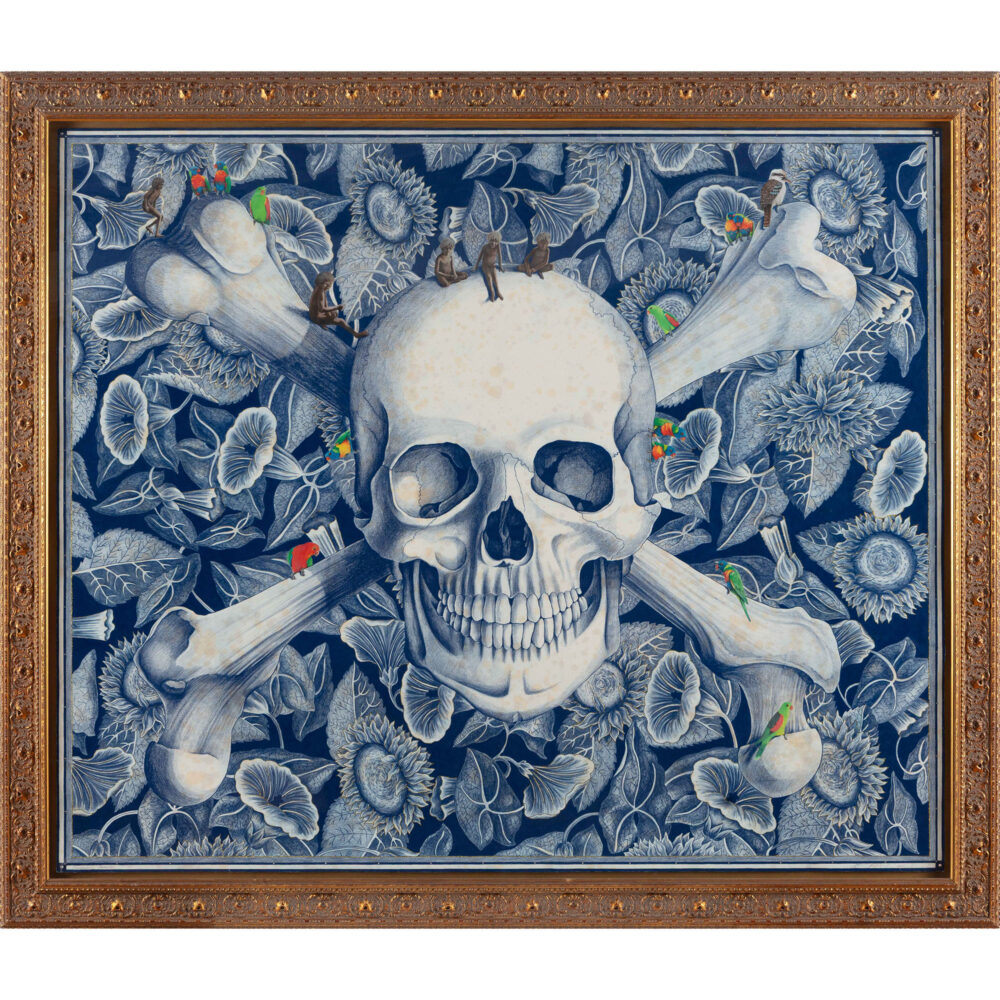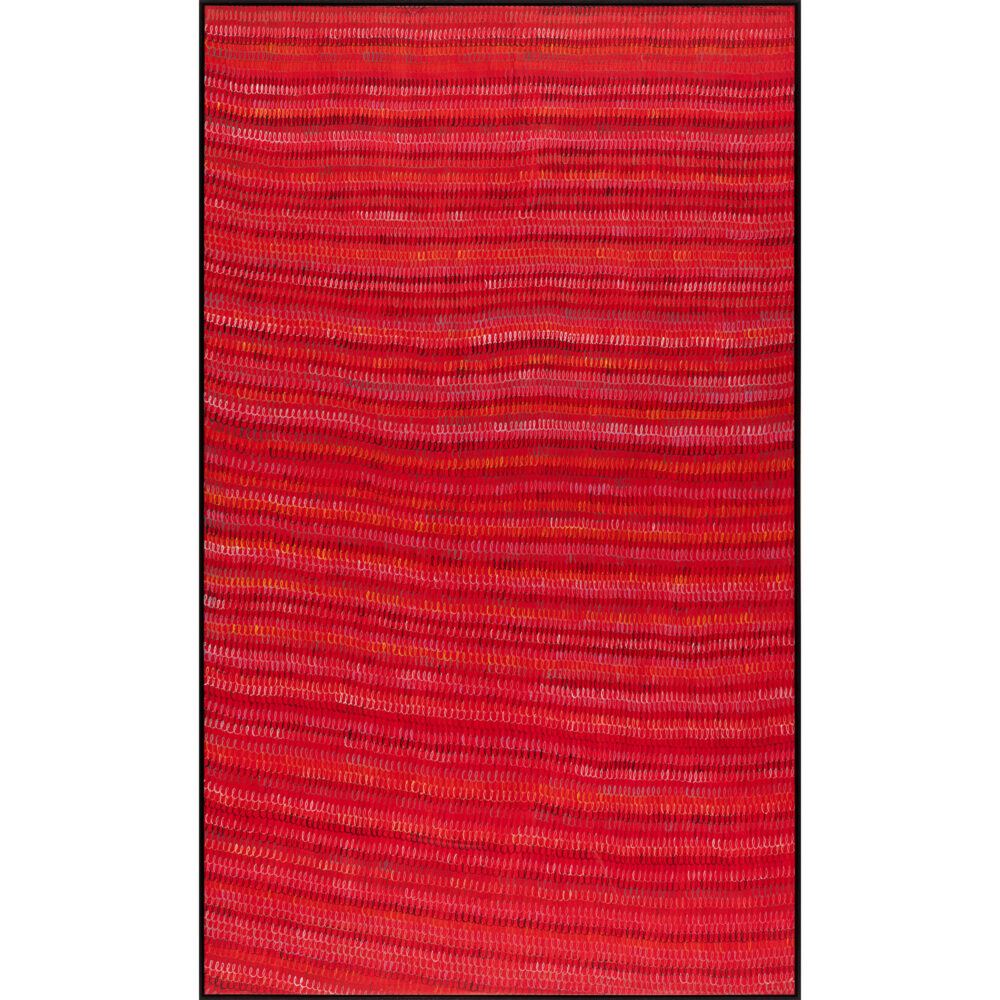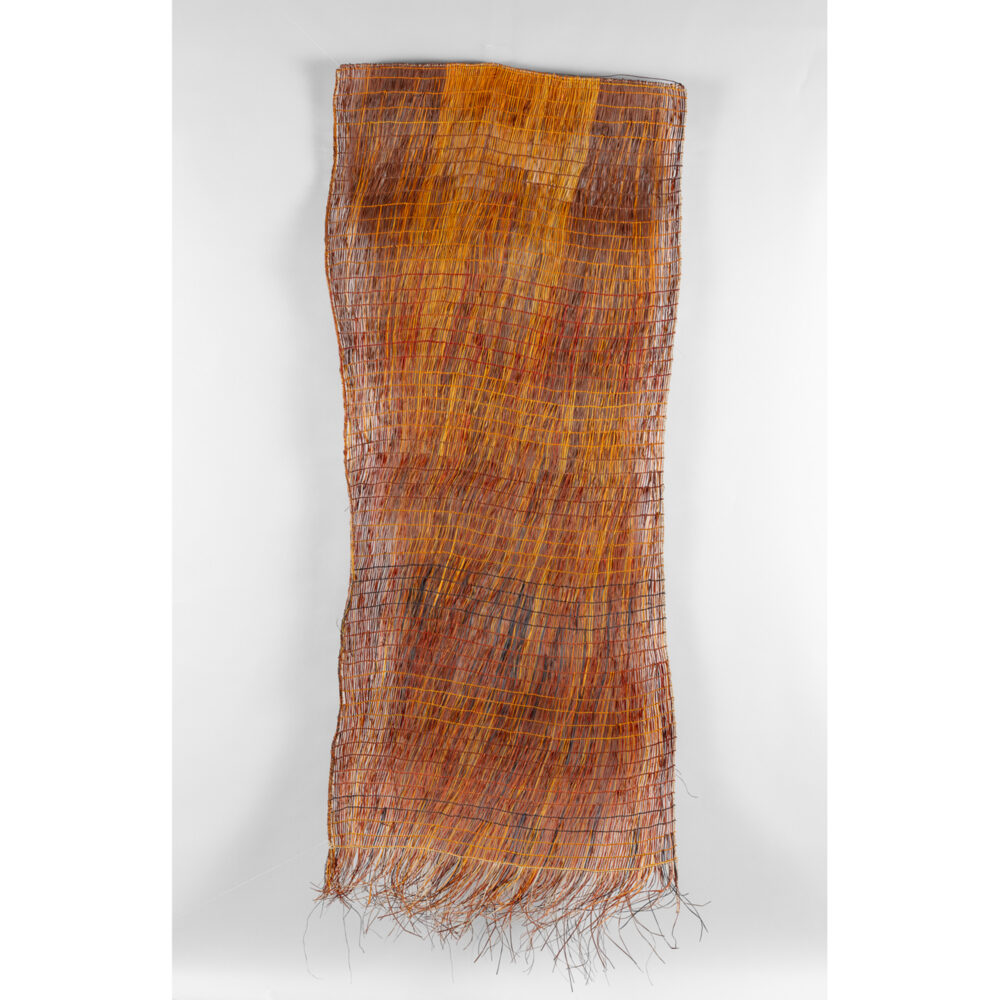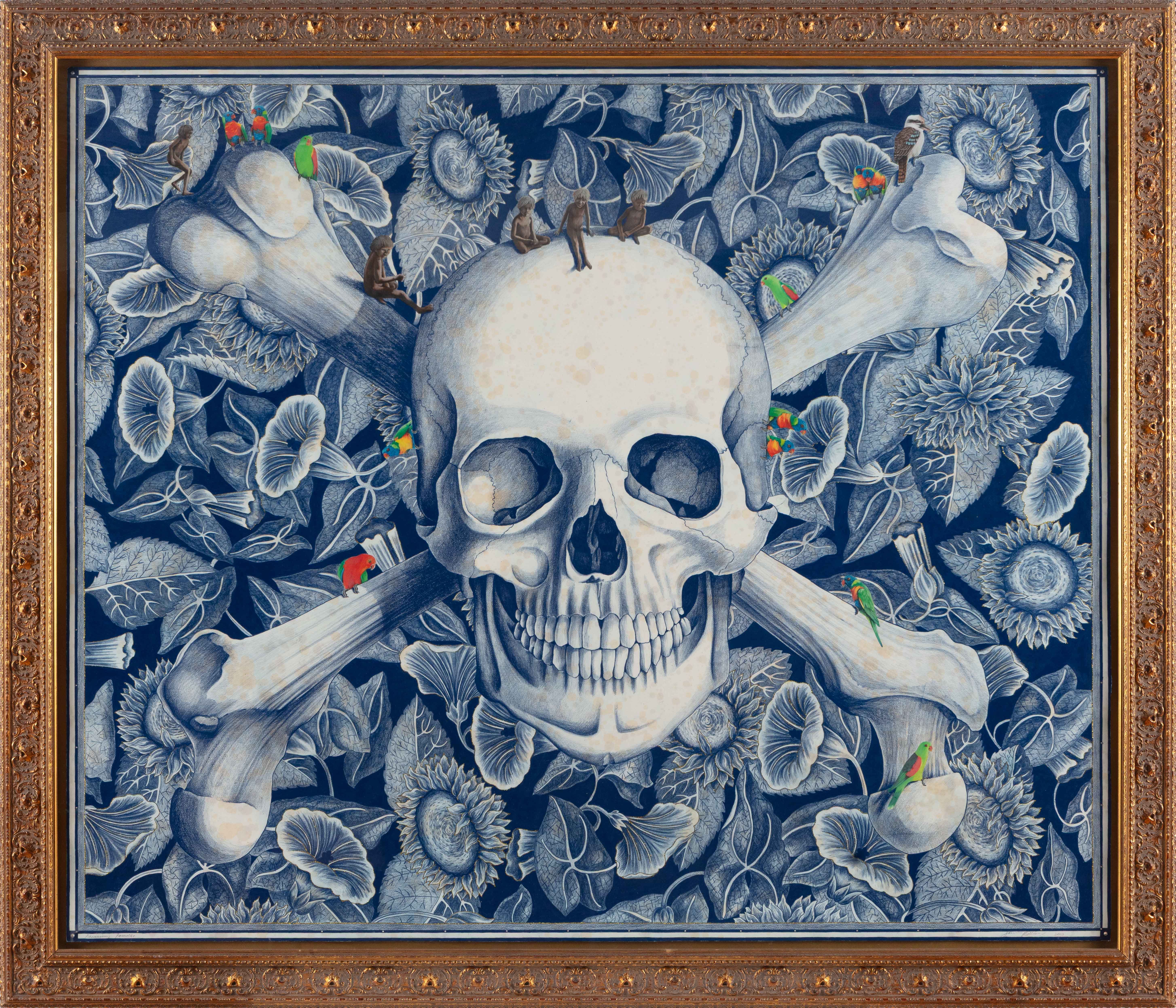
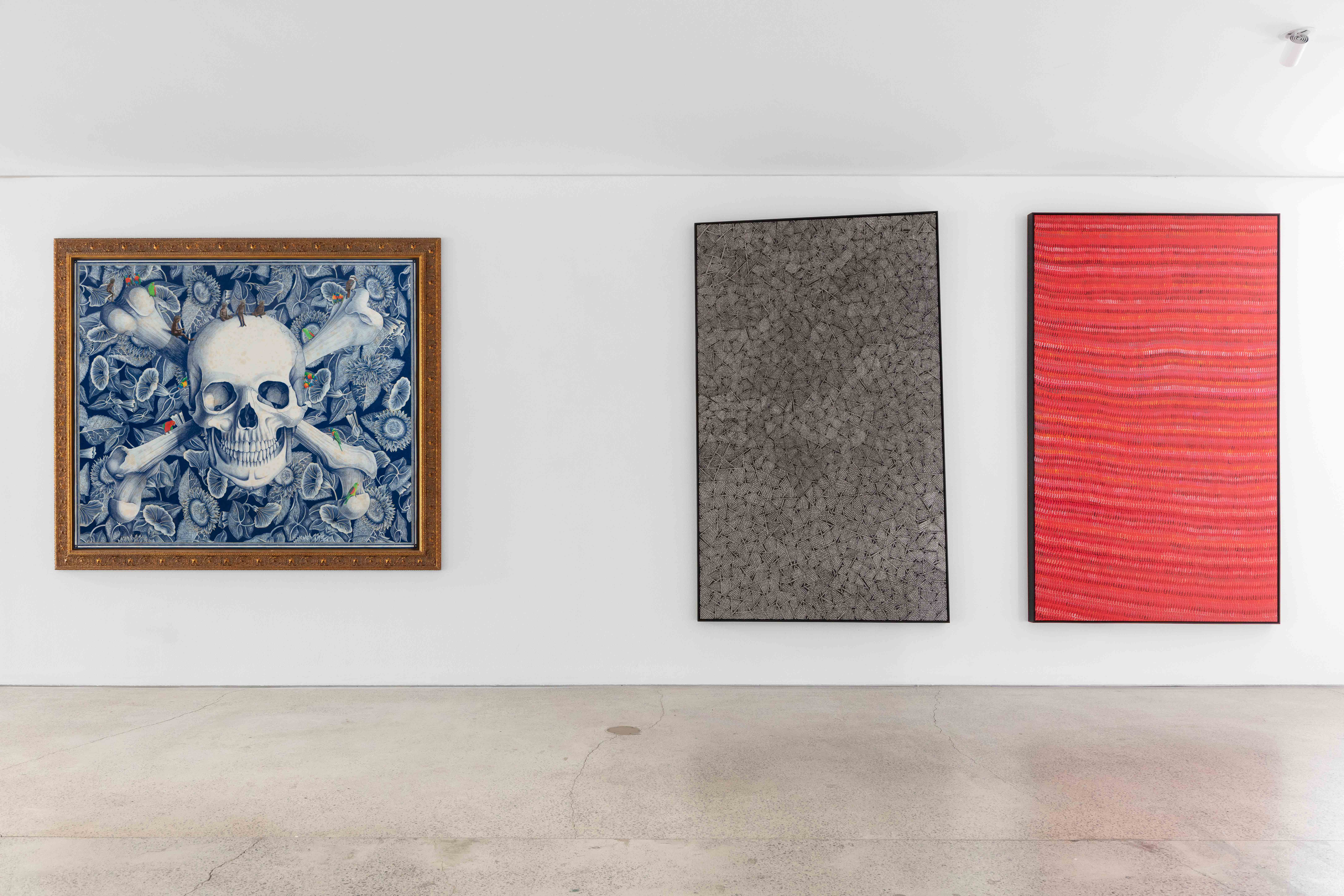
Mellor’s large masterwork, Piccaninny Paradise (2010) exemplifies his practice of reimagining Australian colonial landscapes through a First Nations lens. Using pencil, pastel, glitter, Swarovski crystals, and wash, Mellor transforms the genteel medium of drawing into a powerful commentary on history, memory, and cultural inheritance. The work’s opulence belies its complex critique of dispossession and mythmaking. Mellor, of Mamu and Ngagen / Ngajan heritage, plays a vital role in contemporary Australian art by challenging dominant narratives and asserting Indigenous presence within art historical traditions. His work bridges cultural perspectives, reshaping how Australia sees its past, and future, through aesthetics grounded in truth and reconciliation.
Piccaninny Paradise, 2010
PROVENANCE
Caruana & Reid Fine Art, 2010
Private Collection, Sydney
EXHIBITED
Non Sufficit Orbis, Melbourne Art Fair in association with Caruana & Reid Fine Art, Melbourne, August 2010
Western Australian Art Awards, Art Gallery of Western Australia, August – December 2011
Danie Mellor: Exotic Lies Sacred Ties, University of Queensland Art Museum, TarraWarra Museum of Art, Museum and Art Gallery of the Northern Territory (MAGNT), May – November 2014. Curated by Maudie Palmer AO.
LITERATURE
Elias, Ann, “Flower light,” Eyeline 78 (2014): 35-41.
Elias, Ann, Useless beauty: Flowers and Australian art, Cambridge Scholars Publishing, 2015: 6.
Rivera-Santana, Carlos, Archaeology of colonisation: From aesthetics to biopolitics, Bloomsbury Publishing PLC, 2019: 161 (illus).
$85,000
In stock
Mellor’s large masterwork, Piccaninny Paradise (2010) exemplifies his practice of reimagining Australian colonial landscapes through a First Nations lens. Using pencil, pastel, glitter, Swarovski crystals, and wash, Mellor transforms the genteel medium of drawing into a powerful commentary on history, memory, and cultural inheritance. The work’s opulence belies its complex critique of dispossession and mythmaking. Mellor, of Mamu and Ngagen / Ngajan heritage, plays a vital role in contemporary Australian art by challenging dominant narratives and asserting Indigenous presence within art historical traditions. His work bridges cultural perspectives, reshaping how Australia sees its past, and future, through aesthetics grounded in truth and reconciliation.



